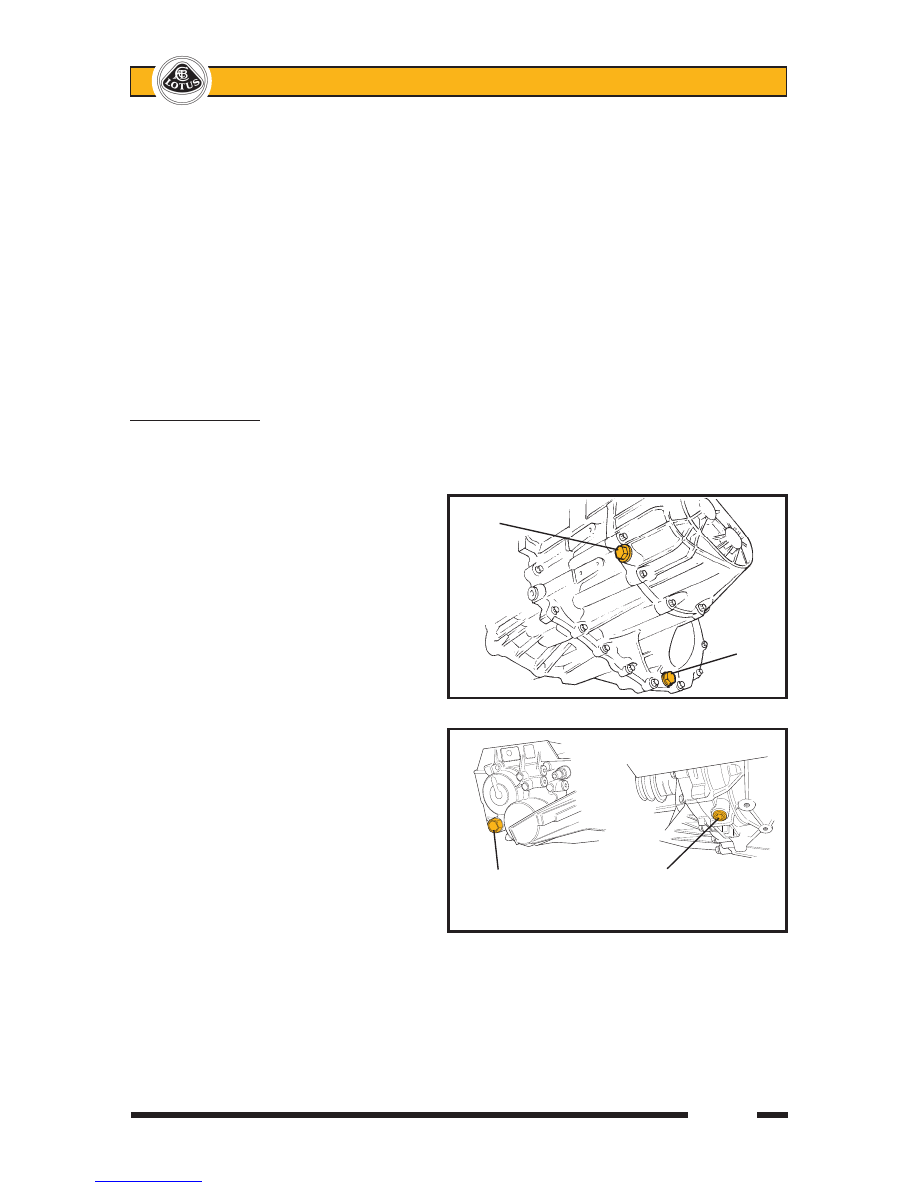Lotus Eleven/Elise/Exige. Instruction - part 55

Page 13
Lotus Service Notes
Section FJ
11. Fit the new lift tube adaptor onto the gear lever and ensure it is free to slide up and down. Hook in the
reverse selector cable and secure to the gear lever abutment. Temporarily fit the new lift tube onto the
adaptor and screw on the new gear knob. Adjust the cable to allow correct reverse gear selection and
tighten adjuster nuts. Remove gear knob and lift tube. Clip the selector cable onto the gear lever ball.
12. Cut the tie strap securing the old lift tube in the gear lever gaiter and fit the new lift tube using a suitable tie
strap. Fit the shroud over the parking brake and gear lever, taking care not to scratch the surface finish,
and aligning the flats on the lift tube with those on the lift tube adaptor. Connect the electrical switches as
necessary, and retain the shroud with the two screws.
13. Use the new spring clip to secure the lift tube to the adaptor, and fit the new gear knob, tightening the grub
screw to orientate the graphic correctly. Fit and secure the parking brake lever sleeve.
14. Check gear selection and reverse inhibit function. Ensure the lift tube returns freely under spring action.
FJ.3 - LUBRICATION
The transmission should be checked for oil leaks, for the correct oil level, and the oil renewed, at intervals
specified in the Maintenance Schedule.
Transmission oil viscosity; SAE 75W/90
Specification; API GL-4 or GL-5
Quantity; - 6 speed C64 2.3 litres
- 6 speed EC60 2.4 litres
- 5 speed 1.9 litres
To check the oil level:
-
Remove the engine bay undertray.
-
Wipe clean the area around the socket
headed level plug on the front face of the
transmission main casing.
-
Remove the plug, and check that the oil
is level with the bottom of the hole. Note
that the release of oil trapped by the plug,
should not be confused with an indication
of correct oil level.
- If necessary, add only the specified
lubricant (see above) via the level plug hole
until the oil level stabilises at the bottom of the
plug hole.
Alternatively, oil may be added into the
top of the transmission via a mechanical
speedo drive (not used in this application)
cover at the right hand top of the transmission,
after removing the single screw.
- Refit the level plug with a new sealing
washer, and tighten securely.
To renew transmission oil:
-
The hexagon headed drain plug located at the bottom of the final drive casing, should be removed im-
mediately after a run when the oil is warm, taking suitable precautions against scalding.
-
Clean the plug, fit a new sealing washer and refit securely.
-
Refill to the level plug hole as detailed above.
C64 filler/level
plug
C64
Drain
plug
f131
EC60
filler/level
plug in end case
f147
EC60
drain plug
in underside